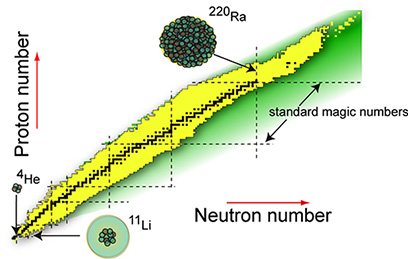
University Distinguished Professor of Physics
Joined the laboratory in 1985
Education and training
- BA, Physics, Coe College, 1980
- PhD, Physics, Michigan State University, 1985
Research focus
- Production and separation of rare isotopes
Contact information
Links
Research
My group studies methods for the production and separation of rare isotopes. Schematically, a heavy ion, such as a uranium nucleus, is broken up at high energy. This produces a cocktail of fragments that are filtered by a downstream system of magnets called a fragment separator. Our current research is focused on preparing for experiments at FRIB where we hope to discover nearly 1,000 new isotopes. Simultaneously, we will study the nuclear reactions that produce new isotopes and work to better understand the best ways to produce any given isotope. We use and work to improve the modeling code LISE++, which involves interesting problems in computational science. Research in this area includes the study and design of magnetic ion optical devices, learning the various nuclear production mechanisms and improving models to describe them. This background allows one to contribute to science by making new isotopes, but also prepares one for a broad range of careers in academia, government (e.g. national security), and industry.

Biography
I grew up in Iowa and came to Michigan State University (MSU) following my bachelor’s degree in 1980. At MSU, I studied nuclear science and graduated in 1985 with a PhD. After graduation, I did postdoctoral research in Germany at GSI. In 1986, I returned to MSU, started the program to produce and separate rare isotope beams, and deliver them to any of the experimental areas. I designed the A1200 and A1900 fragment separators, and was project leader for construction of the S800 spectrometer. A dream of our field to have an advance rare isotope facility, FRIB, has now been realized, and I am excited to continue experiments to study the limits of isotopes and the study of weakly-bound nuclei.
How students can contribute as part of my research team
Students involved in this research will learn ion optics and the tools for producing and separating rare isotopes. Students have the opportunity to study and operate fragment separators and magnetic spectrographs. They will use modern simulation, data analysis, and machine learning tools in this research.
Scientific publications
- Discovery of Na-39, S. Ahn, et al., Physical Review Letters 129 (2022)
- Discovery of Ca-60 and Implications for the Stability of Ca-70, O.B. Tarasov, et. al., Physical Review Letters 121 (2018)

